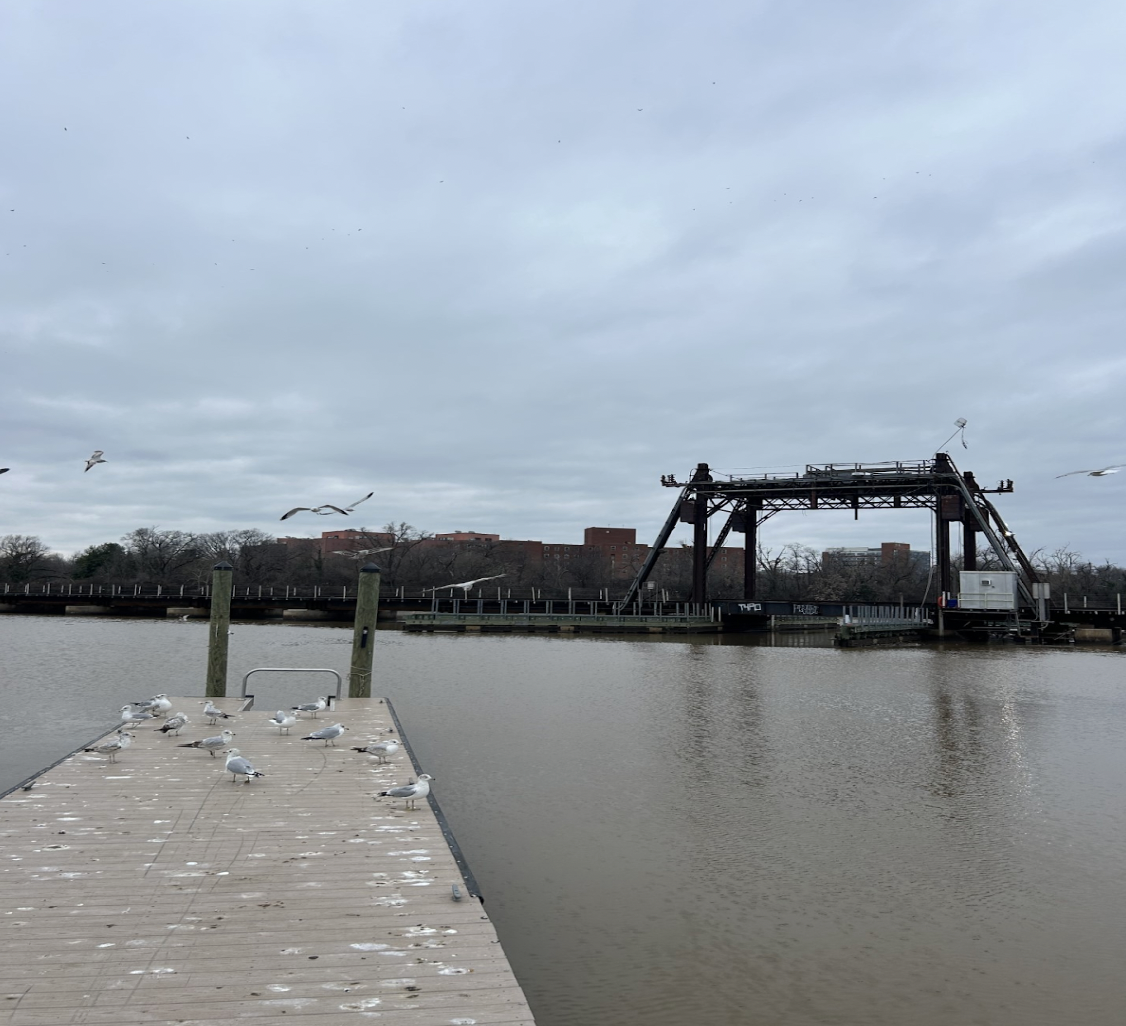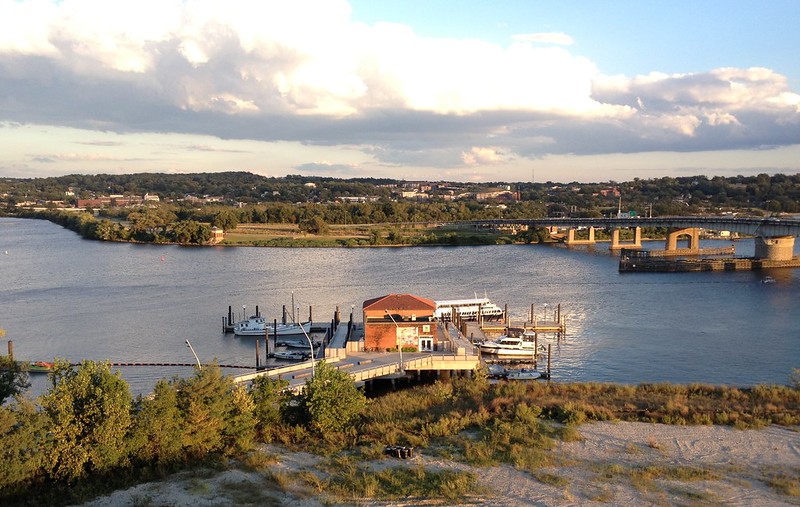
Christina Ritter

Christina Ritter

If you’ve been to Washington, D.C., the capital of the United States, chances are you’ve explored prominent landmarks like the National Mall, the Library of Congress, and various others. But have you ever ventured to Anacostia Park?
Enriched with a complex and nuanced history, the contemporary Anacostia River exhibits significant transformations from its earlier existence as a Nacotchtank settlement between the 1000s and 1600s. Enduring a series of ecological and social transformations over the years, including significant events like European settlement in the 1600s, the establishment of the District’s capital in 1790, the Civil War from 1861-1865, and the Civil Rights Movement from 1954-1968, Anacostia serves as a compelling illustration of how historical events and exclusionary practices can shape a city.
The community endured several years of being used as both a human and industrial waste dump as discussed in Madeleine Dwyer’s “Forgotten by the Clean Water Act.” Then, it faced significant changes with the desegregation of local schools and the construction of the Anacostia Freeway in 1957. These events have deeply influenced the community leaving a lasting impact that continues to affect future generations. Bruce Holmes, a lifelong resident of Anacostia and Community Liaison at Friends of Anacostia Park, is among those whose lives have been shaped by these events.
Despite the passage of the Clean Water Act in 1972, the Anacostia River, having endured years of neglect, continues to rank among the 10 most polluted rivers in the country. This stands in stark contrast to the Potomac River, situated in affluent neighborhoods like Georgetown, which is often regarded as a success story for the Clean Water Act. The disparities between these neighboring water bodies underscore the ongoing challenges faced by Anacostia and highlight the persistent environmental issues that demand attention and concerted efforts for remediation.
In recent years, numerous organizations, including Friends of Anacostia Park – a nonprofit dedicated to enhancing the lives of DC residents by helping them build a stronger connection to the park and feel more empowered to use it – have played a crucial role in bringing attention to the Anacostia River. By providing a range of recreational activities such as skating and fishing, they have contributed to the steady improvement in the river’s water quality, marked by its first passing grade in 2018, discussed in Potomac Conservancy Report.

While exploring the historical events that have shaped environments like Anacostia, where residents have faced significant environmental injustices, maintaining a positive outlook is often difficult. This challenge is amplified by many developers seeking to profit from the river’s recent improvements. Nevertheless, interviews with Sophie Liebel, Americorps VISTA member at Friends of Anacostia Park, and Holmes challenge the notion that such historical events inevitably evoke only eco-anxiety.
Liebel and Holmes both said they are worried about the future of the park, but are also exemplifying eco-gratitude. Signifying an individual’s appreciation and thankfulness towards their environment, Kim-Pong Tam in his article on “Gratitude to nature” explained how eco-gratitude involves recognizing the natural world’s inherent value by acknowledging the myriad benefits it bestows upon us and expressing gratitude for the ecosystems, resources, and biodiversity that contribute to a thriving planet.
Practicing eco-gratitude can be difficult, however, Holmes explained to me how showing our love and appreciation for nature can be as simple as knowing the name of a tree or the history of the land you are on.
In weekly fishing lessons, Holmes teaches fellow community members how to fish, his biggest joy in the park. During his lessons, he emphasizes the importance of knowing what kind of fish you are catching and teaching the history of the land to fellow community members. Holmes “wants you to get to your recreational activities through information,” he said. When he isn’t teaching others how to fish, he said his second favorite activity is educating the public about the history of Anacostia.
In the future, Holmes said would like to see the park focus more on the education of the land’s history and the public to see nature as “beautiful, powerful, and something that belongs to all.” He said doesn’t want anything decided for the park by just one person, rather the collective public needs to come together and decide what they all want as well.
Contemplating Anacostia’s future restoration, including the opinions of residents like Holmes, can indeed be daunting. Liebel described this as she explained the hardest thing for improving Anacostia will be incorporating all the good ideas.
“People don’t really realize how much knowledge there is within the community,” Liebel said. However, eco-gratitude compels us to adopt a positive and appreciative perspective concerning the efforts and initiatives dedicated to enhancing the river’s condition and sustainability. This, in turn, fosters a sense of thankfulness for positive environmental actions and advances, even in the face of persistent challenges.
In 2021, the National Parks Service started to develop preliminary management plans for Anacostia Park. Although the developed plans have yet to be released to the public, they rely on public input with public comments recently ending in December. These plans will offer a range of actions to improve access to trails in the park, support recreational and community use, and many other important aspects. Additionally, external companies and organizations, such as REI, are working alongside Friends of Anacostia Park on environmental restoration programs and helping to fund events such as late-night roller skating events.
Moving forward, it’s crucial to acknowledge that not every environmental challenge should deter us. Instead, we should embrace a perspective that combines gratitude with eco-anxiety, understanding that balance is key in all aspects of life. Despite the overwhelming environmental issues and negative news, recognizing the positive steps taken and expressing gratitude for nature’s beauty is essential. Holmes’ optimism and eco-gratitude toward his home provide valuable inspiration for future environmentalists confronting various injustices worldwide.
Anacostia Park has the potential to establish a precedent for addressing environmental injustices as community engagement continues into the future. It’s crucial to recognize, as exemplified by Holmes’ inspirational story, that seemingly simple activities like fishing and appreciating the land’s history can serve as very powerful tools for practicing eco-gratitude. As efforts continue in Anacostia Park, Holmes said he eagerly anticipates the day when the river will become both swimmable and fishable – optimistically aiming for this transformation within the next two years.